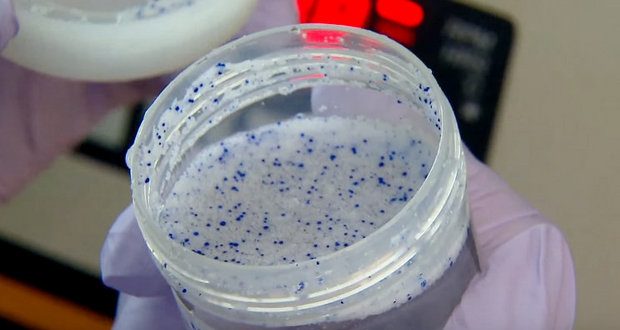We applaud the federal government’s decision to ban harmful microbeads. We are happy to finally say goodbye to these problematic plastic particles that have polluted Canada’s rivers and lakes for far too long, putting fish, wildlife and human health at risk.
According to announced draft regulations, Canada will ban the sale of toiletries used to exfoliate or cleanse containing microbeads by July 1, 2018, and ban the sale of natural health products, non-prescription drugs and toothpaste containing microbeads by July 1, 2019.
What are Microbeads?
Microbeads are tiny particles of plastic less than 1mm in size that can be spherical or irregular in shape and produced in a multitude of colors. Microbeads are manufactured for use in consumer products such as body and face scrubs to produce a “feel good factor”. The types of plastic most commonly used as microbeads are:
polyethylene (PE), polymethyl methacrylate (PMMA), nylon, polyethylene terephthalate (PET) and polypropylene (PP).
How long have Microbeads been used?
Microbeads were patented in the 1970’s, but have only been used as a disposable entity in consumer products recently. Currently there are many hundreds of brand lines worldwide that use plastic for body care cleansing and each year more and more products have plastic microbeads as their main exfoliation ingredient.
What problems do Microbeads pose?
Plastic micro beads are contributing to the increasing flow of plastic into our oceans. These preventable microscopic pieces of plastic are contributing to the fragments of broken down larger pieces of plastic and fibres contaminating our seas, turning them into an unhealthy plastic soup. When used as directed, microbeads are washed down drains and into waste water systems where they are known to pass through these treatment facilities and are consequently flushed out to sea.
A major concern with microbeads is that because of their small size, they have a large surface area by volume, so as a consequence of their use, huge numbers of readymade, highly efficient toxic accumulators are being intentionally released into the environment. Micro-plastics in the marine environment are known to accumulate toxic contaminants – persistent organic pollutants (pesticides, flame retardants, PCBs).
The United States will ban microbeads, effective July 1, 2017.
Agencies/Canadajournal
 Canada Journal – News of the World Articles and videos to bring you the biggest Canadian news stories from across the country every day
Canada Journal – News of the World Articles and videos to bring you the biggest Canadian news stories from across the country every day



